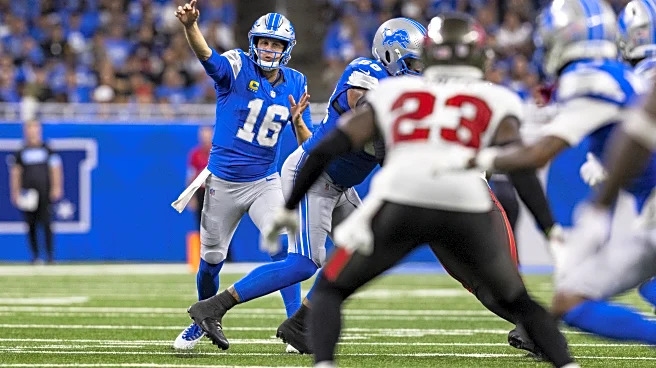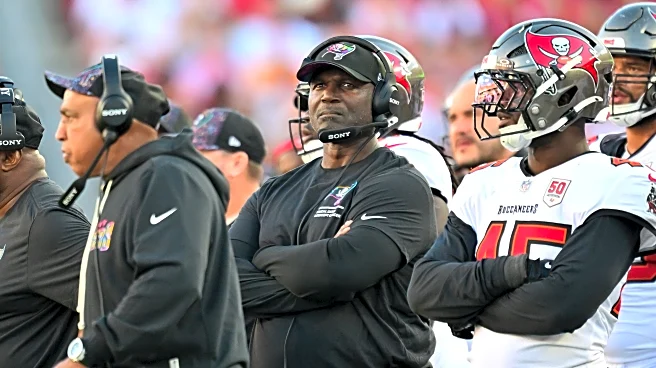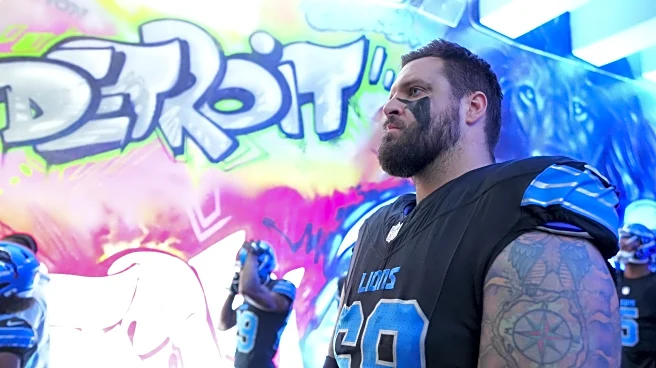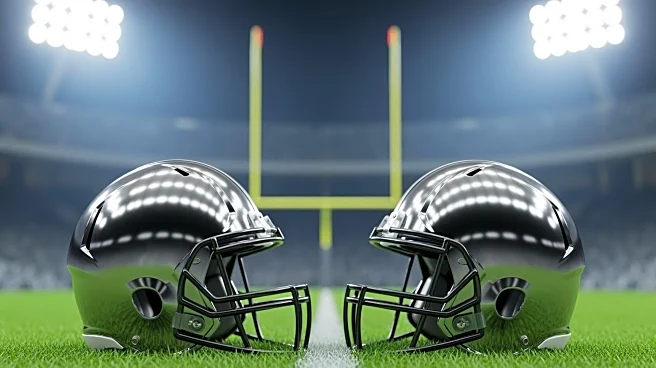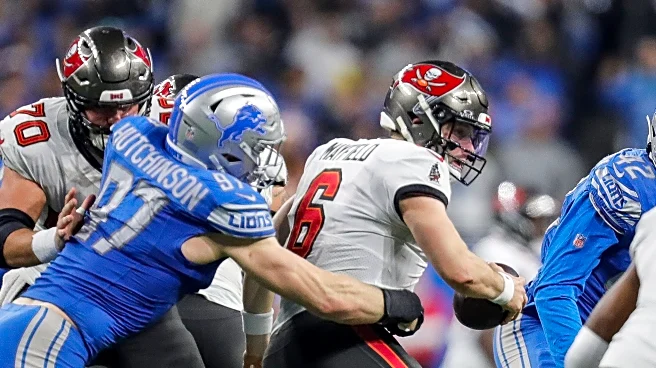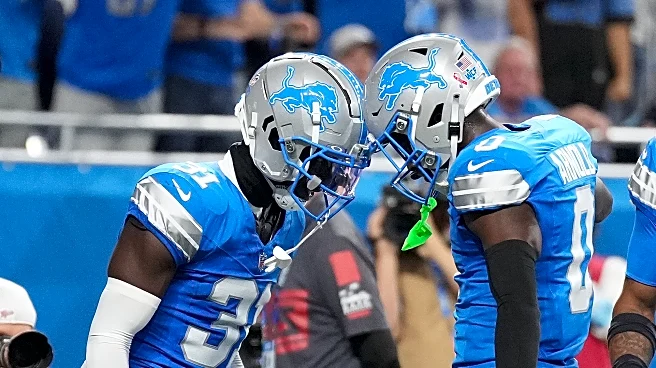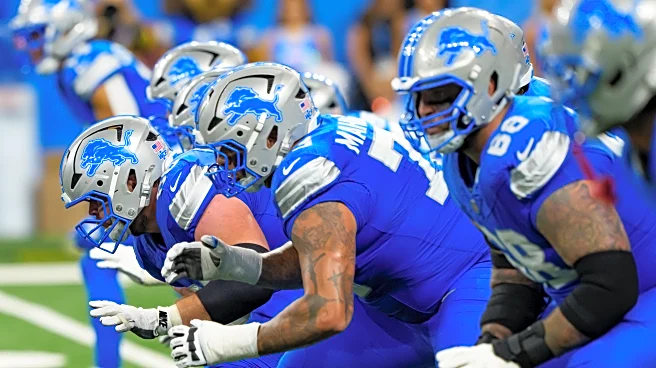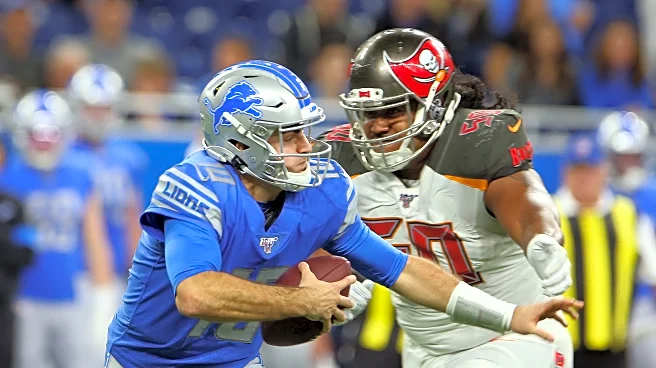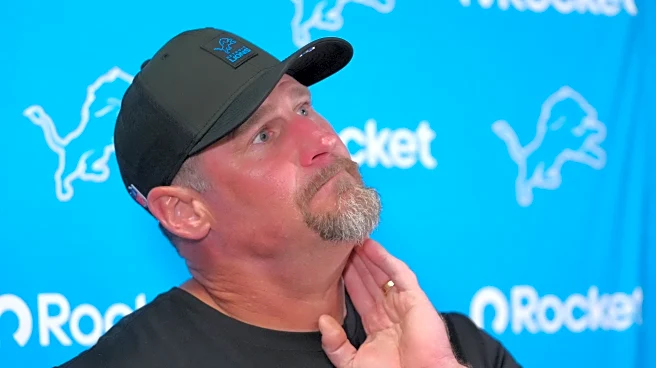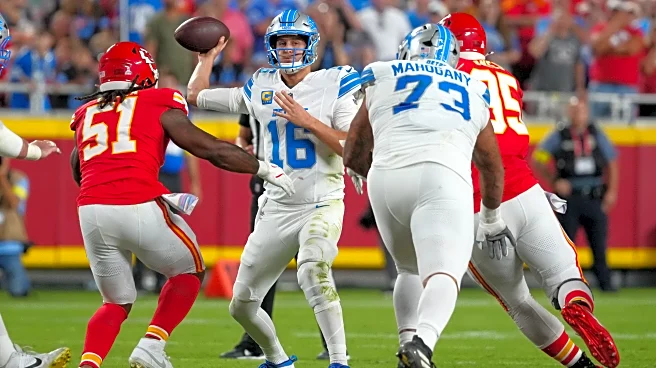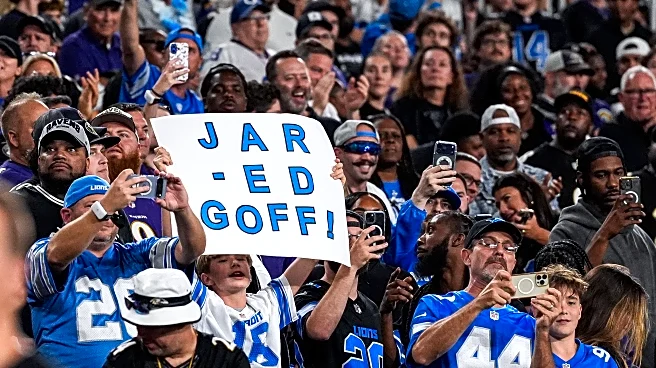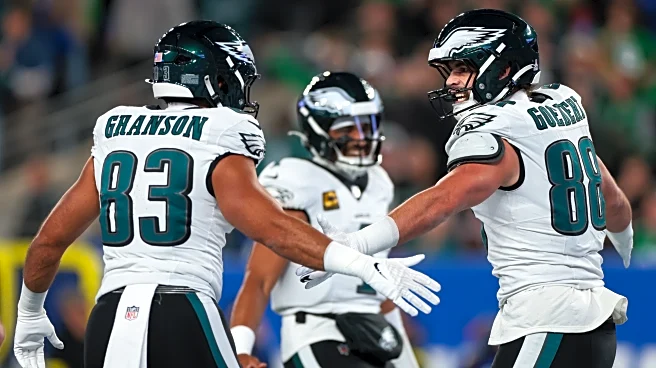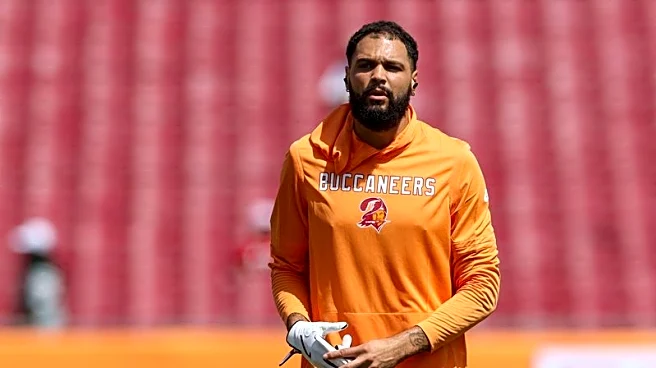It’s another primetime game for the Detroit Lions in Week 7, as they settle into the comfy confines of Ford Field, welcome in 65,000 fans, and host the NFC-leading Tampa Bay Buccaneers. If the Lions want to enter their bye week with some positive momentum, they’ll need to follow the offensive keys to victory laid out in this week’s Honolulu Blueprint.
Bucs’ base schemes
For a detailed look at the opposing scheme, make sure you check out our complementary breakdown piece: Lions Week 7 Preview: Breaking down Bucs’ offensive
and defensive schemes.
2 offensive keys to victory
This week’s Honolulu Blueprint has six keys to victory, two on the defensive side of the ball and another four on offense. We previously discussed the Lions’ two defensive keys to victory, and this piece acts as a complementary article to complete the full picture.
Key 3: Duo and double teams
Buccaneers nose tackle Vita Vea is a problem. He’s big (6-foot-4, 347 pounds), quick, strong, and lines up as close to the football as he can. In the past, the Lions have tasked All-Pro Frank Ragnow with blocking him, but with the Lions’ former center now retired, they’ll need a new game plan.
“He’s a good player. Look, the size is one thing, but his quickness to get off the ball, he’s got explosiveness, and he’s got really good feet,” Lions coach Dan Campbell said of Vea earlier this week. “When you’re a man that big and you can move like he moves, then (as an offensive lineman) you’ve got to do everything right. You’ve got to play with leverage, you’ve got to have the get-off of your life. We have double teams; we’ve got to be able to fit the double teams together. [..] We’ve got to be locked in on every stinking play and we’ve got to work together.”
As Campbell said, double-teaming Vea is the most logical strategy, and the Lions should refer back to how they dealt with Ravens’ Travis Jones as a guide. Against Baltimore, the Lions deployed varying types of double teams against Jones in order to cause him problems both in pass protection and with their rushing attack.
In pass protection, the Lions need to prioritize solidifying the interior and work their way out in this matchup. The strength of the Lions’ offensive line lies with their offensive tackles, so doubling up inside and leaving Penei Sewell and Taylor Decker (who is trending towards playing) in one-on-ones gives the Lions the best chance for success.
In the run game, the Lions deploy an outside zone blocking scheme around 58% of the time, followed by Duo 31%, and Gap concepts just 11% of the time. Against the Ravens’ defensive line, the Lions leaned heavily on Duo, and Detroit should take a similar approach against the Bucs and Vea. This strategy will allow the Lions to continue their double-Vea approach, while also taking advantage of the Bucs’ tendencies to give up rushing yards before contact.
Here’s an excerpt from Next Gen on the “yards before contact” advantage the Lions should have:
“Lions running backs have averaged 1.6 yards before contact per carry this season, the 3rd-highest mark in the league […] While the Buccaneers have allowed the 8th-most yards before contact per carry to running backs (1.1).”
Not only do the Lions get significant yards before contact with Duo, but their running backs “success rate” is also noticeably higher in this concept. According to Sumersports, Gibbs’ success rate behind Duo is 53.57%, compared to 44.68% in outside zone, while Montgomery’s breakdown is 55.56% vs. 37.5%, also favoring Duo.
While this attention to the interior can leave you exposed to perimeter pressure and against the blitz, the Lions are designed to operate this way, and are one of the best teams in the NFL vs. the blitz.
Key 4: Beat the blitz
The Bucs are one of the most effective blitzing teams in the NFL, and coach Todd Bowles will bring and simulate pressure from all over the field. Entering this game, the Bucs blitz 35.5% of the time (fourth most), leading to pressure on 56.6% of their blitz attempts, and accounting for 47 of their 101 team pressures (third).
The Bucs’ blitz can be stifling, and one of their biggest advantages is that they catch teams off guard with their creativity. Bowles will blitz the A-gap with his linebackers, overload edges, use replacement blitzing, drop his edge rushers into coverage, and isn’t afraid to bring the heat with his defensive backs (on 20.9% of blitzes, most in the NFL).
However, the Lions should be prepared to offset the Bucs’ creativity, as these two teams have faced off three times in the past two seasons and are very familiar with each other. Tampa Bay will certainly have new wrinkles planned, but Detroit is keenly aware of that based on their experience playing against them.
Additionally, Lions quarterback Jared Goff has been consistently successful against defenses when they blitz, recording the highest passer rating in the NFL (137.1) and completion percentage (77.1%) in the NFL, while also checking in with the second-best EPA per play (0.56).
“He’s a veteran guy. And he studies, man. This guy works his butt off,” Lions offensive coordinator John Morton said of Goff’s ability to diagnose and adjust to the blitz. “He’s like a coach, and it’s really cool when you’ve got a guy – the trigger, he’s like that. He’s like a coach. It makes it so much easier. And he’s seen a lot of ball. That’s the reason he’s so good. He’s not only good at the blitz, he’s good at everything right now to me. I mean, who throws almost 80 percent (completion percentage) almost every game? So, it’s a tribute to him.”
Key 5: Beat the press, YAC the zone
With the amount of blitzing that the Bucs do, they take a unique approach to coverage to complement their approach. Like most blitz-heavy teams, they deploy a lot of zone coverage (70+% of the time) to take advantage of quarterback mistakes. However, to further complicate this for quarterbacks, the Bucs also like to press their corners, forcing wide receivers a slower path to getting open in the hopes of giving their blitz enough time to get home.
In the previous three meetings, the Goff to Amon-Ra St. Brown connection has been the primary weapon to attack the Bucs’ defensive approach. Over this time period, Goff has averaged 315.67 passing yards per game vs. the Bucs, with a third of his production going to St. Brown, who is averaging 106.7 receiving yards per game. When Goff needs a quick pass to get ahead of the blitz, St. Brown is typically his first read. St. Brown also excels against zone coverage and has a knack for finding soft spots and producing yards after the catch.
One of the main reasons St.Brown has excelled vs. the Bucs is his ability to beat the press. Here’s an excerpt from Next Gen on this topic:
“Amon-Ra St. Brown has faced press coverage (1 yard or less) on 17.0% of routes this season, the highest rate in his NFL career. Though St. Brown has not faced press coverage as frequently as other Lions receivers, he leads the team with 9 receptions on 11 targets against press, resulting in 91 yards and 2 touchdowns. Matchup: The Buccaneers have pressed receivers at the 10th-highest rate in the league (25.5%), allowing 7.8 yards per target when doing so, below the league average (8.2).”
When the Bucs have dedicated extra bodies to account for St. Brown, the Lions have been creative in featuring their other offensive weapons, targeting between eight and 10 different skill players in each matchup, with the second option varying based on the defensive approach. In the last two meetings between these teams, Gibbs has caught a total of 11 passes against the Bucs, while Montgomery has reeled in seven. In their 2024 matchup, Jameson Williams was the second most productive skill player, hauling in five catches for 79 yards, while Sam LaPorta delivered in that role in the 2023 playoffs, registering nine receptions for 65 yards.
The Lions have had most of their offensive success attacking the intermediate parts of the field, which has been a vulnerable area for the Bucs of late. Their linebackers have struggled in coverage lately (especially against play-action), and the gaps behind the linebackers and in front of the safeties have been available. When offenses have been able to hit on these zones, there have been opportunities for yards after the catch (YAC).
Entering this game, the Lions have produced 755 YAC in 2025 (sixth most), while the Bucs have allowed 796 YAC (28th). According to Next Gen, this could be another opportunity for LaPorta to take advantage, as 56.8% of his production has been YAC:
“Sam LaPorta has generated 184 yards after the catch, the most among Lions skill position players and the 3rd-most among all tight ends. Additionally, LaPorta has forced 6 missed tackles, tied for the 3rd-most among tight ends.”
Key 6: Red Zone scoring
While all the “keys to victory” discussed this week will be important factors in this game, none may be more important than red zone scoring. The Lions have won two of their three matchups with the Bucs during the Campbell era, and in the one game they lost, their red zone efficiency was a dreadful 1 for 7, with just 14% effectiveness.
Fortunately for the Lions, this may be another area in which they may have an advantage in this matchup. Through six games, the Bucs defense has allowed teams to score a touchdown on 68.75% of red zone possessions (28th in the NFL). Conversely, the Lions offense has scored a touchdown on 74.07% of their red zone trips (fourth best in the league). In the Lions’ two losses, they were two of six (33.3%) in the red zone, while scoring a touchdown on 18 of 21 red zone trips in their four wins.
In a game where the Bucs’ offense, led by quarterback Baker Mayfield, should have some advantages over an injured Lions’ defensive secondary, Detroit’s offense has to deliver when they get their opportunities.
